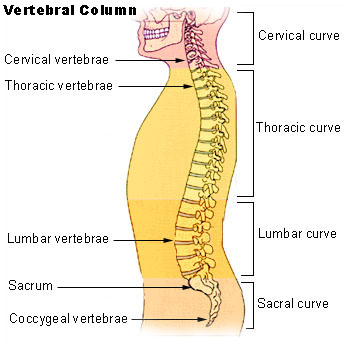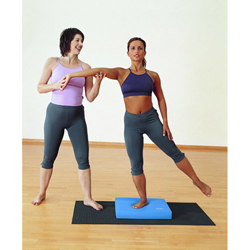So how do back pain sufferers, or those who might be forced to deal with the formidable beast somewhere down the road, rise to the challenge? Here are three simple and affordable (compared to the alternatives) actions we can take to help prevent or alleviate pain.
1. Increase Movement
Sitting has actually been called the new smoking. While this may be a bit of a stretch, it goes to show that many experts agree on the dangers of prolonged sitting. The fact is, we’ve become a sitting society (sit in the car on the way to work, sit at work for eight hours, sit in the car on the way home, sit on the couch), and our spines — not designed for this — are feeling the effects.
Due to this stagnant behavior, we tend to suffer from a lack of blood flow and oxygen to the discs of the spine. As physical therapist and research specialist Adriaan Louw says, “Motion is lotion.” When we don’t move enough, we don’t hydrate the discs, leading to more stiffness and less flexibility (think Tin Man from Wizard of Oz).
So what’s the best way to increase movement? Most experts recommend 30-40 minutes of moderate exercise four days per week. But even those of us who are achieving that outside of work might still struggle with back problems if we spend numerous hours plastered to an office chair. To be aware of how long you’ve been sitting at work, set a reminder on your phone, watch, or computer that tells you to get up and move. Take periodic breaks to get water or just get up and walk around.
A great way to increase movement and provide the back with therapeutic exercise is to use a foam roller. Foam rollers provide rejuvenating massage and tension release, helping to hydrate fascia (the body’s connective tissue). These foam roller videos demonstrate how to foam roll to relieve lower back pain.
Can’t foam roll at work? Incorporate some basic stretching into your day as your job allows. Occupational therapist Angela Kneale provides some ideas on how to do this without even leaving your desk in her exercise book, Desk Pilates. Another excellent way to reduce sitting time is to use a raise-lower workstation that allows you to stand while at your computer; many companies are now implementing them.
2. Improve Posture
Sure, we’ve all heard this one before. But the way we carry ourselves while walking, lifting heavy objects, sitting and sleeping has a direct impact on our spine. And as we know from point #1, many people spend a good portion of the day sitting, so proper posture and alignment is crucial.
The spine’s natural ‘S-shaped’ curve provides the key. Many people tend to slouch forward while at a desk or computer, eliminating their natural curve and proper alignment. It’s so easy to do, it usually happens without realizing it.

To counteract slouching, try a posture awareness device that keeps the head from moving too far forward. The OPTP Posture Supporter™ can be worn discreetly underneath clothes to help reduce poor postural habits. It promotes awareness of spinal posture and assists in retraction of the shoulders.

OPTP Posture Supporter™
Another product that helps promote proper sitting position is a lumbar roll. Placed behind your lower back (lumbar region of the spine) on a chair or vehicle seat, it encourages good alignment while providing a comfortable support. One the most popular pain relief products of all time is the Original McKenzie® Lumbar Roll™, a foam cushion that has helped thousands achieve freedom from low back pain. Its simple design is the brainchild of the late Robin McKenzie, a world-renowned therapist who was also responsible for the famous McKenzie Method® of self-treatment.

Original McKenzie® Lumbar Roll™
Recent advancements in technology also offer promise for posture improvement. Everything from wearable devices to computer screen sensors have been designed to detect your positioning, providing reminders and feedback for adjustment. Although prices are still fairly high for these new smart gadgets, the market will surely be seeing more of them in the near future.
3. Get Stronger
Our muscles can also be a culprit. Because the lower back is not an area of the body that is often worked in most exercise programs, the muscles in this region can become underutilized and weak. It’s important to include forms of exercise that directly address the low back, hips, pelvis, and abdominals, helping to make these core muscles stronger. Stronger back muscles will not only alleviate pain, but also help prevent injury, especially in the case of lifting heavy objects.
Training core muscles can be done in many ways. Simple, classic moves such as sit-ups, squats and planks can be easily performed using just your own body weight. Practices that endorse controlled, focused movement such as Pilates and yoga are also excellent for enhancing core strength. Consider signing up for a class with a local instructor or practicing basic moves at home. Many exercises can be done without the aid of equipment, though these core strength and stability products make excellent props for use during Pilates and general fitness routines. As always, make sure to consult with your physician before starting any exercise program.

io-ball
Looking to give your conventional chair an upgrade? All those hours spent sitting at work can be put to better use by simply replacing a regular desk chair with a stability ball. Actively balancing on a stability ball requires the subtle use of core muscles, strengthening them while you’re responding to emails. It’s like a workout while you work!
Ultimately, it’s up to us to take control of our own back pain. It requires effort, but making small lifestyle changes can lead to big benefits down the road. Not everyone will be able to avoid injury, surgical procedures, or hospital stays. But for many of us, a little self-help can go a long way toward achieving an active, pain-free life. As Benjamin Franklin once said, “An ounce of prevention is worth a pound of cure.”







